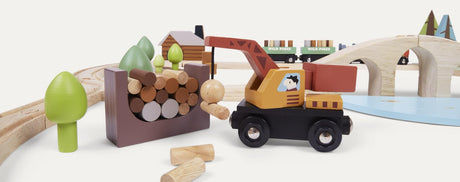What if we didn't force our children to wear mittens? Use natural consequences instead of forcing our children to wear their clothes.
For many parents of young children, one of the BEST things about spring and summer is how easily kids are ready to get outside. Hats, shoes, and in less than 10 minutes we are ready to leave the house.
For some parents, well before the first snow of the season, we are already mentally preparing for all the additional preparations required to get anywhere.
Besides extra layers of clothing, one of the challenges many families face at the front door is the power struggle over wearing outerwear - jackets, mittens, toques, beige pants, etc.
This situation is so common, especially when children enter the phase that Montessori calls the “oppositional crisis,” which begins around 18 months.
During this period, autonomy begins to become VERY important for the child, and a major issue for parents and educators.
The solution: Natural consequences
In these types of situations, it can be useful to look to natural consequences to obtain the child's cooperation.
Natural consequences involve giving freedom (with limits) to learn by experiencing what might happen by not wearing a hat or gloves. In the case we are discussing, this is the opportunity to learn how unpleasant and uncomfortable it is to have cold hands!
With young children, warning them of what might happen doesn't usually work. They hear you, but they learn best through experience.
This principle applies to so many other educational learnings, without any controversy. But yet, on this one...
Are you serious ? I don't want my child to get frostbite!
Natural consequences don't mean we should let our children wear a wet swimsuit outside in winter.
There are always limits, especially when it gets colder. Ideally, limits should be inversely proportional to the actual risk: the more serious the risk, the more restricted and restrictive the limits should be.
For example, if a child doesn't want to wear their mittens this beautiful morning, it's not necessarily that big of a deal. We can set an appropriate limit by requiring him to bring them with him, and reminding him that he can put them on when he is cold. In almost all cases, when it's really cold, the child ends up wanting to put on their mittens after some thought.
I often do a few discreet checks while we're out: "How do your hands feel? I can help you put them on, your mittens, if you want."
If you live in an area with subzero temperatures and it's a safety issue, it's OK to set a limit that the child MUST wear all of their outdoor clothing.
In this case, if the child does not wear his outer clothes, the consequence is that he does not go out. We then talk about a logical consequence - but we will come back to this in a future article.
BONUS – Natural consequences also help teach bodily autonomy
Another advantage of this approach is that it gives your child bodily autonomy and he learns to recognize and follow the signs that his body sends him.
In winter, children are often still very physically active. Depending on how cold it is and how many layers of clothing they are wearing, they may be warm, even if you, the adult sitting still, are cold.
One last point to consider
Check with your child to see if their outdoor clothing would be a problem for them.
If your child is hesitant to wear an item of clothing, it may be because it is too small or too big, itchy, uncomfortable, etc. Try to understand why he doesn't want to wear it.
For example:
- a snowsuit that is too big or too loose can make movement more difficult and restrict your mobility to move and play;
- large ski gloves often do not allow them to fully use their hands, and in early childhood it is very important for them to explore with their hands.
Showing empathy and helping to resolve their frustrations goes a long way in building trust and helping them follow more important rules!





